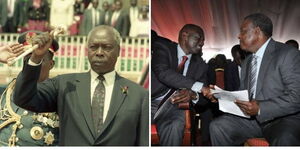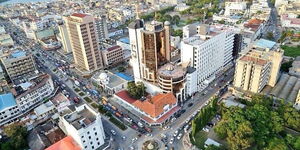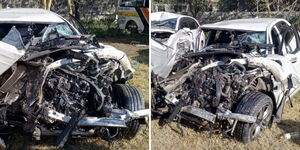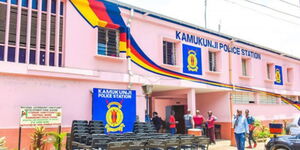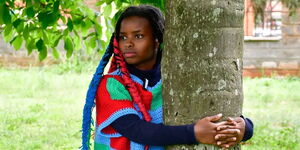The much-awaited fifth edition of the World Rally Championship (WRC) Safari Rally since its return to the WRC calendar is finally here. Dubbed the “World’s Toughest Rally,” the gruelling event kicks off on Thursday, March 20, and will run until Sunday, March 23, culminating in the crowning of a winner.
This year’s rally promises to be bigger and better, with organisers announcing that it will be the longest edition since its return to the WRC calendar in 2021. Covering a 384.86 km route, it introduces new stages such as Mzabibu (a vineyard-lined 12.36 km stretch) and Camp Moran (a 32.2 km endurance test).
A defining feature of the Safari Rally is its rugged terrain, which challenges drivers to navigate rocky roads, sandy tracks, and water crossings, all while enduring intense heat. The unpredictable weather adds to the challenge, with heavy rains often reducing visibility and creating slippery surfaces.
What truly sets the Safari Rally apart is its distinct Kenyan character. Spectacular wildlife encounters—including elephants, giraffes, and zebras—make it a one-of-a-kind experience. Additionally, the rally carries a rich historic legacy, making it a cherished event for motorsport enthusiasts.
The Safari Rally will feature additional categories, including WRC2, a feeder series using Rally2 cars for private teams and manufacturer-backed drivers aiming for WRC. Other categories include WRC3 (for semi-professional drivers), Junior WRC (for drivers under 29), and the WRC Masters Cup (for drivers over 50).
The winner of the Safari Rally is determined by the fastest cumulative time across all timed stages. Drivers compete in multiple special stages, navigating Kenya’s unforgiving terrain while aiming for the shortest total time. Any penalties—such as for jumping the start, missing checkpoints, or unauthorized mechanical assistance—are added to a driver's time and can impact their final ranking.
The driver (and co-driver) with the lowest total time at the end of the rally is crowned the champion. Additionally, the final Wolf Power Stage awards bonus points to the five fastest drivers, contributing to the overall WRC championship standings.
The ceremonial flag-off will take place at the Kenyatta International Convention Centre (KICC) in Nairobi on Thursday, March 20, followed by a Super Special Stage in Kasarani spanning 4.76 km. The day will conclude with the newly introduced Mzabibu stage (8.27 km). Before the official start, a 5 km shakedown stage will be held on Wednesday, March 19.
A mix of local and international drivers is expected to compete in the gruelling three-day rally. Defending champion Kalle Rovanperä of Toyota Gazoo Racing will face off against top competitors like Elfyn Evans (current WRC series leader) and Thierry Neuville (2024 WRC series champion). Kenyan drivers, including veteran Carl Tundo, Karan Patel, Jeremiah Wahome, and Hamza Anwar, will also be aiming to make their mark. The last Kenyan to win the Safari Rally was Ian Duncan in 1994.
Day two will see the rally shift to Naivasha, starting with the 31 km Camp Moran stage, a staple of the event. Drivers will then tackle the Loldia, Geothermal, and Kedong stages, known for their difficult conditions. Each stage will be raced twice, culminating in a 93.89 km battle of endurance between man and machine.
Day three will be the longest and most demanding. The first stage, Sleeping Warrior, will take place early in the day, with morning mist and low sun posing visibility challenges. Next is Elementaita, which follows the shores of Lake Elementaita before cutting across the open grasslands of Soysambu Conservancy. This year, the stage will be run in reverse, making grip levels unpredictable.
The day will conclude with the demanding Soysambu stage, featuring tight, twisty sections alongside high-speed straights. This stage, running in reverse for the first time, includes a major spectator zone near the start, making it a prime viewing location.
The final day promises high-stakes action. Drivers will tackle the brand-new Mzabibu stage at Morendat Farm, designed with fans in mind, offering excellent viewing points just 10 km from Naivasha town. This technical test on mixed surfaces will challenge drivers as they navigate winding farm roads.
Next is the scenic Oserengoni stage, set within the private Oserengoni Conservancy. Featuring twisty wooded sections, deceptive straights, and open plains, this stage is known for frequent wildlife sightings, adding to its uniqueness.
The grand finale will take place at Hell’s Gate, serving as the Wolf Power Stage. This rugged section has produced some of the most iconic moments in Safari Rally history. A new tweak for 2025 will see cars turn right near Fischer’s Tower instead of left, introducing an additional challenge in the final stretch.
Celebrating its 70th edition, the Safari Rally has cemented its place in motorsport history. Among its legendary drivers is Shekhar Mehta, who holds the record for the most Safari Rally wins. Mehta dominated the event with five victories, including four consecutive wins from 1979 to 1982, all in Datsun vehicles. His first triumph in 1973, alongside co-driver Lofty Drews, marked a defining moment in Kenyan motorsport.
Mehta's success had a profound impact, inspiring a new generation of Kenyan drivers and helping the rally gain international recognition. It was his triumph that played a role in the Safari Rally's official entry into the WRC calendar, sanctioned by the Fédération Internationale de l'Automobile (FIA).
Other legendary figures of the Safari Rally include Joginder Singh, Björn Waldegård, and Juha Kankkunen. Singh, fondly known as the “Flying Sikh,” won the event in 1965, 1974, and 1976. His 1965 victory in a Volvo PV544, navigated by his brother Jaswant Singh, earned him the title "Simba ya Kenya" (Lion of Kenya), cementing his place in the nation’s motorsport history.
This year, Kenyans have the opportunity to experience the thrills and spills of the rally by travelling to Naivasha and watching it live. Otherwise, those who might not get an opportunity to make the trip can catch it from the comfort of their TV sets or even phones by livestreaming the rally from WRC’s YouTube page. Also, one can watch the rally from local channels that will be transmitting the rally footage from WRC’s network.
Notably, only WRC have the rights and jurisdiction to capture video footage of the rally. A media centre established at the various stages of the rally will ensure media houses who would like to get footage from the rally are well facilitated. However, photography is allowed provided one has a media pass.
Aside from the premium racers, other Kenyan drivers who will participate in the rally are Samman Vohra, Aakif Virani, Nikhil Sachania, Jasmeet Chana, Rio Smith, Minesh Rathod, Sameer Nanji, Issa Amwari, Evans Nzioka, Pauline Sheghu and Ishmael Omabati. Tinashe Gatimu, a 20-year-old Kenyan driver, will make her debut in the Kenya National category of the Safari Rally. She will be navigated by her mother, Caroline Gatimu, in a Subaru Impreza N12.
The Safari Rally is more than just a race—it’s the ultimate test of endurance, resilience, and skill. Drivers battle brutal terrain, unpredictable weather, and gruelling conditions, proving why this remains the world’s toughest rally.
Beyond the thrill, the rally boosts tourism, fuels local businesses, and showcases Kenya’s breathtaking landscapes and wildlife to the world. As engines roar and dust rises, the Safari Rally cements its legacy—an unforgiving battleground for racers, a spectacle for fans, and a moment of pride for Kenya on the global stage.


